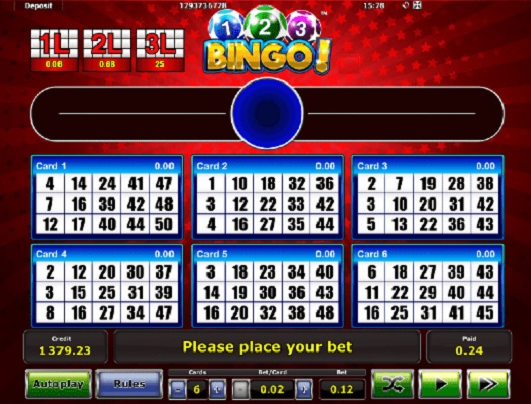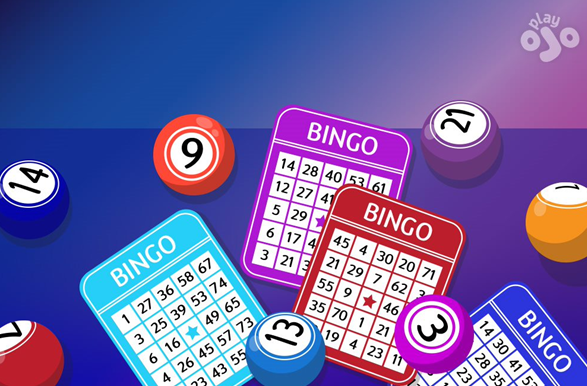To calculate the probability of winning bingo, you assess the number of cards you have against the total in play. For instance, if you have 5 cards in a game with 100 cards, your winning chance is 5%.
Probability Basics
Introduction to Probability
Probability, a fundamental concept in mathematics and statistics, measures the likelihood of an event’s occurrence. In the context of games like bingo, understanding probability helps players gauge their chances of winning. Probability values range from 0 (impossibility) to 1 (certainty), offering a quantitative method to assess outcomes.
Key Probability Concepts
Key concepts in probability include:
- Events: An event represents a specific outcome or a set of outcomes. For example, drawing a specific number in bingo.
- Probability of an Event: This is the ratio of the favorable outcomes to the total possible outcomes. It is the core calculation in determining bingo odds.
- Independent and Dependent Events: In bingo, the drawing of one number doesn’t affect the next, making these events independent. Understanding this distinction is crucial for accurate probability calculations.

Calculating Probabilities in Bingo
Factors Affecting Probability in Bingo
Several factors influence the probability of winning in bingo, including:
- Number of Players: More players reduce individual winning chances.
- Number of Cards in Play: Playing with more cards enhances the probability of winning.
- Bingo Card Design: The arrangement of numbers on the card can impact the game’s outcome.
Step-by-Step Guide to Calculating Bingo Odds
To calculate bingo odds, follow these steps:
- Identify the Winning Criteria: Determine what pattern or line completes a win.
- Calculate Total Possible Outcomes: Assess how many ways numbers can be drawn.
- Evaluate Favorable Outcomes: Count the combinations that lead to a win.
- Use Probability Formulas: Apply the probability formula, P(E) = Number of favorable outcomes / Total possible outcomes.
Advanced Probability in Bingo
Probability of Winning with Different Card Amounts
Playing with multiple cards increases the chances of winning. For instance, if a single card offers a 1% chance of winning, two cards might increase this to 2%, assuming independence of events.
Impact of Game Variations on Odds
Different bingo variations, like 75-ball or 90-ball, alter the probability landscape. Each variant has unique patterns and winning combinations, affecting the odds.
Strategies to Increase Winning Odds
Choosing Bingo Cards
Smart card selection can slightly tip the odds. Opt for cards with a diverse range of numbers, enhancing the chances of hitting a number with each call.
Playing with Multiple Cards
Managing multiple cards effectively increases winning probabilities. This strategy requires attention and speed, balancing the increased odds with the challenge of tracking more numbers.
Bingo Probability Myths and Facts
Common Misconceptions
A prevalent myth is that all bingo cards have equal chances of winning. While technically true for single draws, the arrangement and variety of numbers can influence the game’s progression.
Facts About Bingo Odds
A fact about bingo odds is their foundation in mathematical probability. Unlike games heavily reliant on luck, bingo allows for strategic play based on probability calculations.
Advanced Probability in Bingo
Probability of Winning with Different Card Amounts
When playing bingo, the probability of winning varies significantly with the number of cards in play. Here’s a detailed analysis:
- Single Card Play: With a single card, the probability of winning depends directly on the total number of cards in play. If 100 cards are in play, your chance of winning is 1 in 100 or 1%.
- Multiple Cards: Increasing the number of cards improves the odds. For instance, if you play with 5 cards out of 100, your winning probability rises to 5%.
These calculations assume that each card has an equal chance of winning, which holds true in most standard bingo games.

Impact of Game Variations on Odds
Bingo has various formats, each affecting the odds:
- 75-Ball Bingo: This variant typically involves patterns. The odds of winning depend on the complexity of the pattern.
- 90-Ball Bingo: This game usually has three stages – one line, two lines, and a full house. The odds change at each stage, with a full house being the least probable.
Each format requires a unique strategy, and understanding these nuances can greatly enhance the player’s experience.
Strategies to Increase Winning Odds
Choosing Bingo Cards
When it comes to card selection, here are some strategies:
- Variety in Numbers: Select cards that cover a wide range of numbers. This diversification maximizes the chances of having a number called.
- Avoiding Duplicate Numbers: If possible, choose cards that don’t duplicate numbers, spreading the risk.
Playing with Multiple Cards
The strategy of playing multiple cards requires balance:
- Increased Odds: More cards mean higher chances of winning, as each card acts independently.
- Attention and Speed: Managing multiple cards requires a high level of concentration and quick reflexes to mark off numbers.
Bingo Probability Myths and Facts
Common Misconceptions
There are several myths in bingo that need addressing:
- “Always Lucky Numbers”: No number in bingo has a higher chance of being drawn. Each draw is a random event.
- “Winning Streaks”: Past wins do not influence future games. Each game is independent.
Facts About Bingo Odds
Understanding these facts can enhance gameplay:
- Random Number Generation: Bingo numbers are drawn randomly, ensuring fairness in the game.
- Statistical Probability: The probability of winning in bingo can be calculated mathematically, providing a clear understanding of the odds.
Strategies to Increase Winning Odds
Choosing Bingo Cards
Selecting the right bingo cards is a strategic move. Here’s how to do it effectively:
- Diversity in Numbers: Opt for cards that showcase a broad range of numbers. This strategy increases the likelihood of matching the called numbers.
- Unique Number Combinations: Choose cards with unique number combinations to reduce overlap and spread out your chances.
These tactics don’t guarantee a win but strategically improve the odds.
Playing with Multiple Cards
Playing with multiple cards is a common strategy to increase winning odds in bingo. Here’s a deeper look:
- Balancing Quantity and Manageability: While more cards increase your chances, they also demand more attention. It’s a balance between the number of cards you can effectively manage and the potential increase in odds.
- Cost Consideration: More cards mean higher costs. If each card costs $1 and you play 10 cards, that’s a $10 investment per game. It’s important to balance the potential rewards with the costs involved.
Bingo Probability Myths and Facts
Common Misconceptions
Bingo, like any game of chance, comes with its own set of myths. Some of these include:
- The “Due” Numbers Myth: Some players believe that if a number hasn’t been called for a while, it’s “due” to appear. This is a fallacy as each draw is independent and random.
- More Players, Lower Chances: While technically true, the decrease in probability is often minimal, and the excitement of the game with more players can be worth the slightly lower odds.
Facts About Bingo Odds
Facts about bingo odds are grounded in probability theory:
- Equal Chances for All Numbers: Each number has an equal chance of being drawn in every game. The randomness of the draw is what makes bingo both exciting and unpredictable.
- Fixed Odds: In a standard game of bingo, the odds of any given number being called are 1 in 75 (for 75-ball bingo) or 1 in 90 (for 90-ball bingo).
